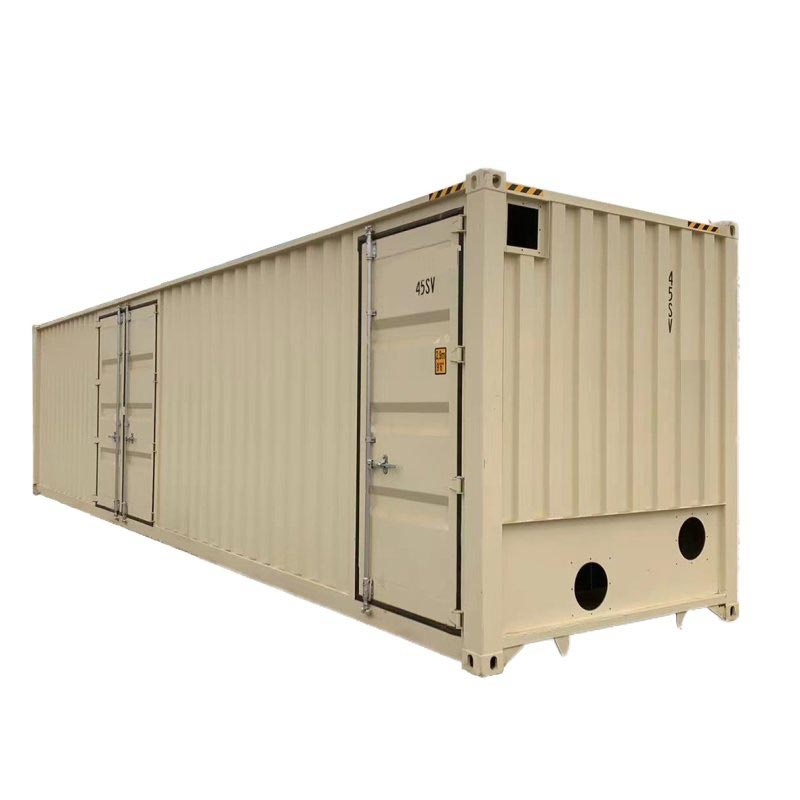
 English
English  简体中文
简体中文 Español
Español Português
Português русский
русский Français
Français 日本語
日本語 Deutsch
Deutsch tiếng Việt
tiếng Việt Italiano
Italiano Nederlands
Nederlands ภาษาไทย
ภาษาไทย Polski
Polski 한국어
한국어 Svenska
Svenska magyar
magyar Malay
Malay বাংলা ভাষার
বাংলা ভাষার Dansk
Dansk Suomi
Suomi हिन्दी
हिन्दी Pilipino
Pilipino Türkçe
Türkçe Gaeilge
Gaeilge العربية
العربية Indonesia
Indonesia Norsk
Norsk تمل
تمل český
český ελληνικά
ελληνικά український
український Javanese
Javanese فارسی
فارسی தமிழ்
தமிழ் తెలుగు
తెలుగు नेपाली
नेपाली Burmese
Burmese български
български ລາວ
ລາວ Latine
Latine Қазақша
Қазақша Euskal
Euskal Azərbaycan
Azərbaycan Slovenský jazyk
Slovenský jazyk Македонски
Македонски Lietuvos
Lietuvos Eesti Keel
Eesti Keel Română
Română Slovenski
Slovenski मराठी
मराठी
What are the main differences between Special Container and Ordinary Container?
2025-09-03
For global businesses dealing with complex logistics, construction, or specialized warehousing needs, understanding the difference between standard and special containers is crucial. At Container Family, we have years of experience, a commitment to innovation and excellence, and continuous advancement of our expertise in this field. While standard containers are ubiquitous, special containers offer numerous unique features to meet a variety of demanding applications.

Core Definition
Standard Containers: Primarily used for the efficient, safe, and standardized transportation of dry goods worldwide by ship, rail, and road. Key features include uniformity, stackability, and basic weatherproofing.
Special Containers: Containers with significant improvements to standard structures, materials, or systems that enable them to perform specific functions beyond simple cargo transportation. They are customized solutions for specific operational challenges.
| Feature | Ordinary Shipping Container | Special Container |
| Primary Purpose | Standardized Dry Goods Transport | Specialized Functionality (e.g., Storage, Workspace, Processing) |
| Design Flexibility | Highly Standardized (ISO dimensions) | Highly Customizable (Dimensions, Layout, Features) |
| Walls | Solid, Corrugated Steel (Fixed) | Often Modified (e.g., Removable, Insulated, Reinforced, Side Openings) |
| Roof | Solid, Corrugated Steel | Often Modified (e.g., Removable (Open Top), Reinforced, Added Ventilation/Access) |
| Doors | Standard Double Doors at one End | Highly Variable (Roll-up, Sliding, Extra Wide, Sealed, Multiple Locations) |
| Floor | Marine Plywood on Steel Cross Members | Reinforced Steel, Anti-slip Coatings, Chemical Resistant, Insulated |
| Frame/Structure | Standard Corner Castings & Twistlock Points | Often Reinforced, Added Lifting Points (e.g., Fork Pockets, Corner Legs), Modified Base |
| Internal Environment | Basic Ventilation (Passive) | Controlled Environments (Refrigeration, Heating, Insulation, Humidity Control) |
| Internal Layout | Empty Cargo Space | Custom Partitioning, Plumbing, Electrical Systems, Shelving, Workstations |
| Materials (Beyond Std) | Primarily Corten Steel, Marine Plywood | Special Steels (e.g., Stainless), Advanced Composites, Enhanced Insulation Panels |
| Examples (Container Family) | Standard 20ft, 40ft, 40HC Dry Containers | Energy Storage, Wastewater Treatment, Mobile Offices, Refrigerated, Heat-Resistant, Swimming Pools, Hook Lift Bins, Open Tops, Flat Racks |
Structural Modifications
Open Top Containers: Equipped with a removable open top, they enable oversized cargo to be loaded from the top by crane.
Rackmount Containers: Equipped with foldable or removable end walls, they provide a flat platform for extra-wide, extra-high, or extra-heavy items. Our folding designs save space on return transport.
Platform Containers: Essentially the exposed base frame of a container, reinforced to maximize heavy-load capacity, they are ideal for transporting large, indivisible items.
Side-Opening Containers: Equipped with full-length side doors, they greatly facilitate quick loading and unloading, or allow the container to be used as a workshop or storefront.
Japanese Self-Storage Containers: Optimized to provide secure, convenient modular storage units, they typically feature robust locking and ventilation systems.
Hook-Lift Containers: These specialty containers are designed with integrated lifting points for easy loading onto hook-lift trucks for transporting waste, recyclables, or construction debris.
Enhanced Functionality and System Integration
Refrigerated Containers: Incorporating powerful integrated refrigeration units, advanced insulation, and sophisticated control systems, they maintain precise temperatures for perishable goods, pharmaceuticals, or sensitive materials.
Insulated Heat-Resistant Containers: In environments where temperature stability is critical, specialized insulation and, in some cases, active cooling or heating systems may be used.
Energy Storage Containers: Designed to safely house lithium-ion battery packs, power conversion systems (PCS), climate control (HVAC), and fire suppression systems for renewable energy applications or grid support. This container family's design prioritizes safety, thermal management, and ease of maintenance.
Wastewater Treatment Containers: Fully integrated modular plants within a container shell, equipped with water tanks, pumps, filters, UV systems, and control panels, for decentralized wastewater treatment.
Swimming Pool Containers: Specialty Containers feature reinforced structures and are equipped with specialized waterproofing, lining systems, filtration systems, pumps, and often feature viewing windows or decks, allowing for the creation of instantly transportable swimming pools.
Material and Structural Upgrades
Enhanced Durability: Specialty Containers typically utilize thicker weathering steel, reinforced frames, or specialized coatings for use in extreme environments.
Specialty Flooring: Steel checkered plate, phenolic resin-coated flooring, or chemical-resistant coatings are suitable for workshops, heavy machinery, or specific cargo types.
Security Features: High-security locking systems and reinforced door hardware. Commonly used for self-storage and high-value cargo units.
Specialized doors: rolling doors, sliding doors or extra-wide doors tailored to the application.



